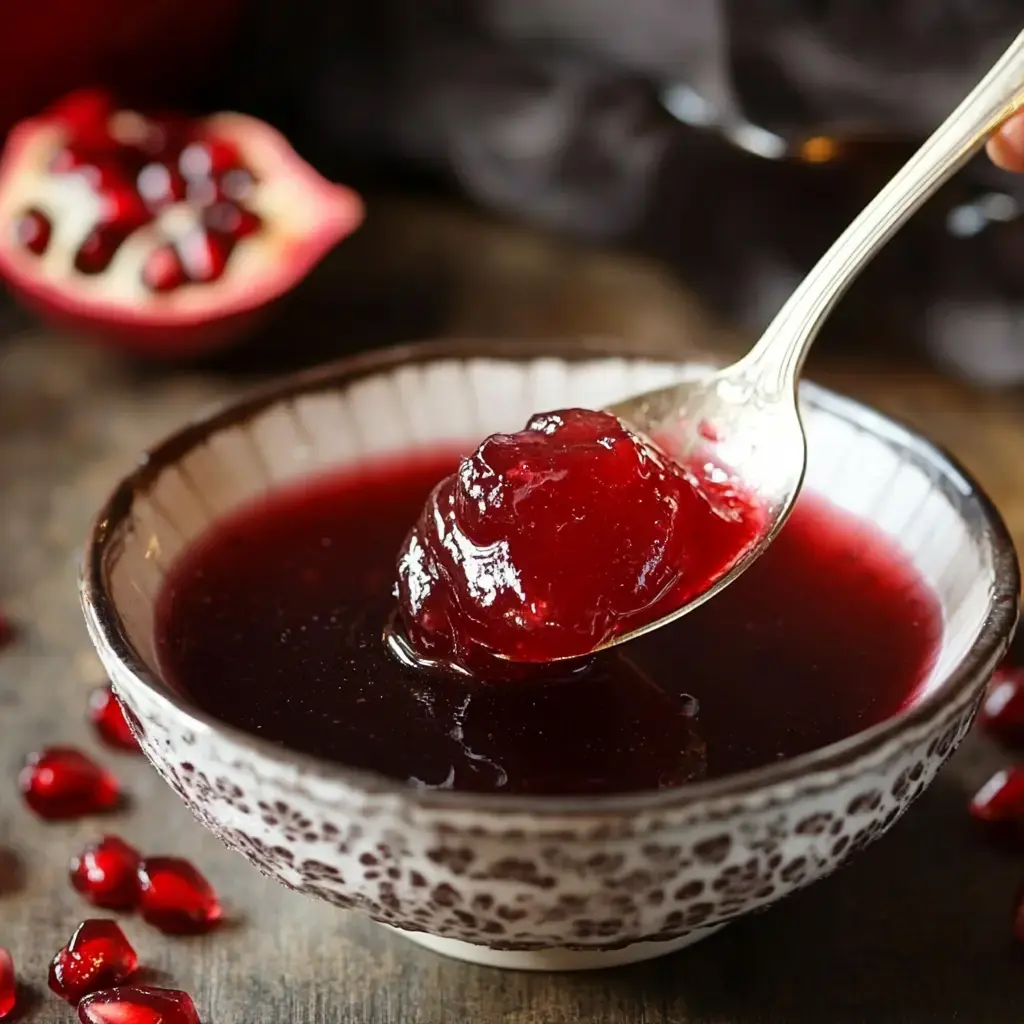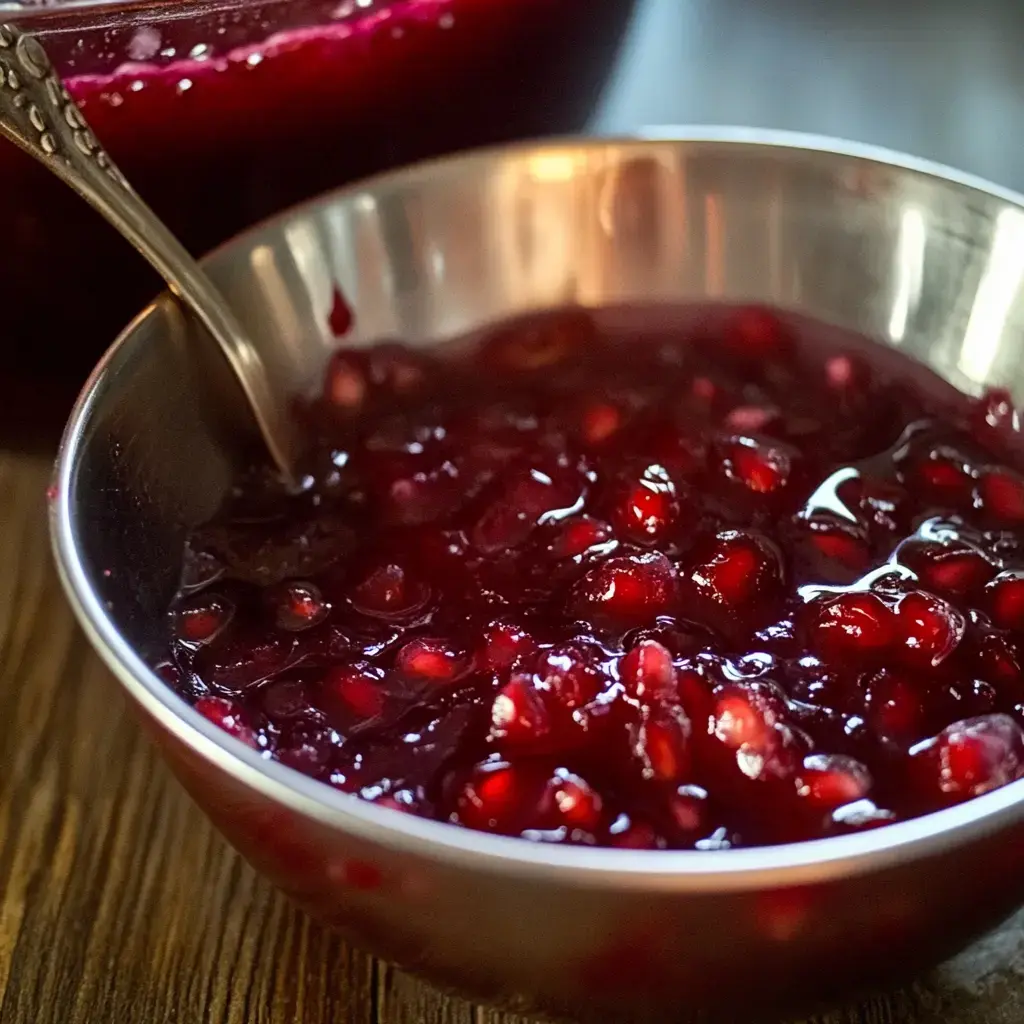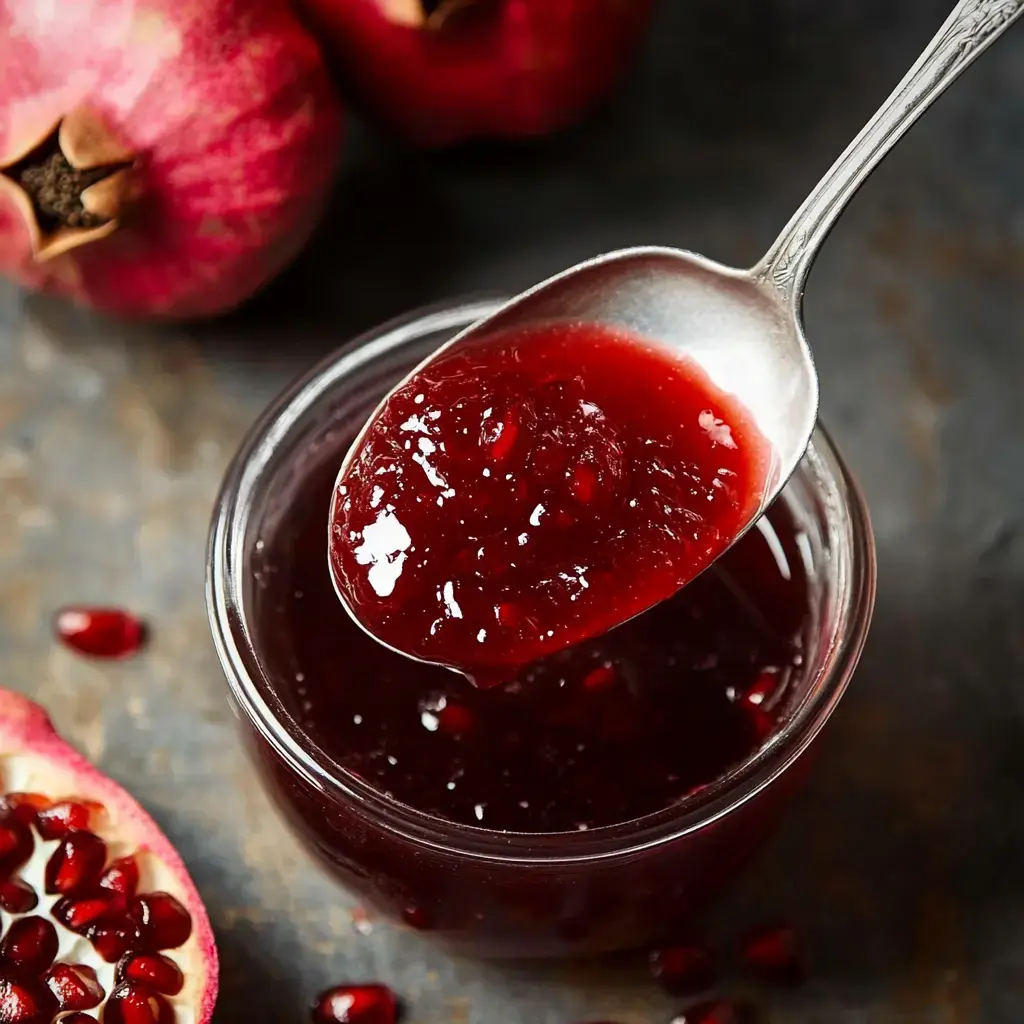 Pin
Pin
Homemade Pomegranate Jelly brings back fond childhood memories. Crafted from juicy pomegranates with just enough sweetness, this vibrant ruby-colored treat hits the perfect balance between sweet and tangy. I learned this family favorite from my grandmother, and now I whip it up whenever these fantastic fruits come into season.
Unique Features of Our Vibrant Pomegranate Jelly
This jelly can transform your everyday meals. Slather it on crusty bread, swirl it into morning yogurt, or glaze it over your chicken dishes. You'll only need three basic ingredients - pomegranate juice, sugar, and pectin. The natural juice creates that gorgeous crimson shade and delivers authentic flavor you won't find in commercial options. When pomegranates are abundant and cheap, make extra batches to enjoy throughout the year.
Ingredients
- Pomegranate Juice: Opt for natural juice for genuine flavor. Look for pure, additive-free varieties
- White Sugar: Standard granulated helps with proper setting and maintains that beautiful ruby color
- Pectin: Standard powdered type from your grocery store. This ensures your jelly firms up nicely
- Unsalted Butter: A small amount prevents foaming during cooking. Feel free to leave it out if preferred
Instructions
- Prepare Jars:
- Use soap and warm water to clean four pint jars with their lids and bands. Set them to dry on a clean cloth.
- Prepare Juice:
- For homemade juice, pulverize pomegranate seeds and filter through fabric. Make sure you get clear liquid without pulp.
- Begin Cooking:
- Combine juice, pectin, and butter (optional) in a large saucepan. Heat on medium-high while stirring until bubbles form.
- Warm Containers:
- Submerge clean jars in hot water briefly. Carefully remove and place on your towel.
- Incorporate Sugar and Continue Cooking:
- When mixture bubbles, pour in all sugar at once. Keep stirring until boiling resumes, then cook for exactly two and a half minutes.
- Remove Foam:
- Take pot off heat and skim any foam from the surface.
- Pour into Containers:
- Transfer hot jelly into warmed jars. Leave some headspace. Clean the edges and secure lids.
- Process in Boiling Water:
- Submerge sealed jars in boiling water, ensuring they're completely covered. Boil for 10 minutes before removing to cool.
 Pin
Pin
Crafting Delightful Pomegranate Jelly
There's something magical about breaking the seal on your homemade pomegranate jelly. The vivid color and tangy-sweet flavor can't be matched by commercial products. My children adore watching it wobble on their breakfast toast, and I'm happy knowing exactly what ingredients went into our family treat.
What Makes a Good Jelly
Quality jelly should be transparent and hold its shape well. It shouldn't have any chunks or particles - just smooth, wiggly deliciousness. That's the main difference between jelly and jam. When sunlight passes through pomegranate jelly, it looks like beautiful red crystal.
All About Pectin
Pectin is the secret to successful jelly. Pomegranates don't naturally contain much pectin, so adding some helps your jelly set quickly. I grab regular pectin from the grocery store - it works in around 30 minutes and always delivers. You don't need to simmer forever or leave juice straining overnight like grandma did.
Picking Your Juice
Your jelly's quality depends on your juice. Fresh pomegranates are awesome if available, but bottled pure juice works great too. Just check the ingredients - you want only pomegranate juice, nothing else. Don't buy anything with extra sweeteners or other fruit juices blended in.
 Pin
Pin
Getting the Perfect Set
Making jelly needs your attention. First mix juice with pectin, then heat until bubbly. Toss in your sugar, wait for it to bubble again, and cook for exactly 2 1/2 minutes. That's what works in my kitchen, though you might want to add a minute for firmer results. Don't forget to remove the foam at the end for a prettier jelly.
Wrap-Up
Fan of pomegranates? Use them creatively in sauces for meats or fresh-pressed juices. For desserts, think sorbet! Their tangy sweetness takes things to the next level.
Frequently Asked Questions About the Recipe
- → Why include pectin?
Pectin helps jelly set firm instead of staying runny like syrup. Natural pectin in fruits isn't strong enough here. Go for sure-jell powdered pectin—mixes in better than the liquid type. Add it when boiling hot or it won't work.
- → Is butter a must?
Butter cuts down foam during cooking and clears the jelly. A tiny 1/4 teaspoon makes a difference. For vegans, skip and skim foam gently. Alternatives like coconut oil work too. Lower the heat slightly if leaving out butter.
- → Can bottled juice work?
Bottled juice can save time if it's 100% pomegranate. Double-check the label—no cocktails or blends. Fresh juice gives a brighter, richer taste but takes effort. You'll need 4 cups per batch. Don't forget to strain those seeds if juicing fresh!
- → How should I store it?
Keep sealed jars in a dark place for up to a year. Once opened, refrigerate and finish within 3 months. Clean rims well before sealing, and water-bath process for long-term storage. Avoid freezing—it messes up the texture.
- → What if it won't set?
If jelly stays runny, reheat with extra pectin—half a pack at a time. Test firmness with a chilled plate. Sometimes, more sugar helps too. Boil to 220°F for the ideal set. Be patient—full setting might take 1-2 days.
